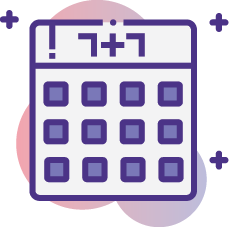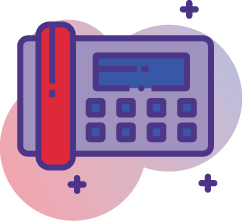Do you remember a time before email? If you were born in the mid-90s or later, you probably don’t. Email was intended to facilitate communication, yet I think it has become counter-productive because we spend so much time managing our emails.
According to Statistica, in 2019, approximately 293.6 billion emails were being sent each day. Today, that number is over 300 billion. This includes both business and personal emails. This amounts to over 3.5 million emails being sent every second. By 2023, it’s expected that this number will be closer to 350 billion as email continues to grow on a consistent basis. It takes approximately 28% of your workday to deal with your email.
However, if we were more efficient with all this communication, we could reduce the amount of time we spend looking for lost emails, finding the right email to reply to, and eliminate the feeling of overwhelm most of us experience when we open our email account. Can you imagine how it would feel to see only a handful of emails in your inbox instead of the hundreds or thousands you are currently seeing? Imagine how your stress will reduce knowing you won’t be losing any important emails anymore? By just spending time on three areas with your email, you will be in control, have lower stress, and a higher credibility score as you’ll be an Email Ninja!
Discipline: You are going to need to have the discipline to make these steps work for you. Cleaning up your inbox once is not enough. Taking care of your email is like exercise, and one workout (or one cleanup) is not enough. You will need to invest 20-30 minutes each day, making sure that you clean it up and keep it clean.
– Start by being heavy-handed on the delete and unsubscribe button. What emails are of no use to you and not worth even holding onto in case you want it later? Start deleting, unsubscribing, and marking as junk or spam. Your company may have an impressive spam filter, but you know that there are many emails that still get through that shouldn’t. Get rid of them first, and remain friendly with your delete button in the future. We will set up systems and rules for predictable email in the Systems section.
– Schedule a time each day to clean up your inbox the same way we need to schedule a time for exercise or it doesn’t get done. My times are morning, noon, end of the day for no more than a few minutes each. Move the emails that the rules don’t move to the appropriate folder or category. Delete, respond, schedule, but keep working at that inbox to stay in control during the day. My goal is to have the inbox empty when I leave the office at night, so something went wrong if an email is still sitting in my inbox. I also don’t want to realize that I forgot something important at the end of the day, so I maintain the inbox several times throughout the day to keep my focus and my organization.
– Archive. Regularly purge and archive (monthly at the very least). If you want to keep your sent files for a time period (let’s imagine you feel the need to hold onto them for a year), then each month, go to your sent folder and permanently delete the sent emails from 13 months ago. If you haven’t pulled it out of your sent folder because you needed it in the last 13 months, will you need it going forward? Purge anything over a year old. For folders that are completed (such as events), archive them. Archiving doesn’t mean they are gone forever, but they aren’t filing up your email views. If you need them, you can still go back.
Systems:
– Use Categories or Labels (Outlook or Gmail wording). Identify what category each email belongs to. Perhaps you have a category for meeting requests, travel, events, or clients. As you look at your email for the first time, immediately assign a category or label to it so that you can search for those types of emails when you need them. When it is time to schedule an upcoming trip for you or your executive, you can search for the travel category to find all you need quickly.
– Use Folders and create a hierarchy filing system. I personally would be lost without using folders. They aren’t the same as categories/labels, as folders are a permanent storage place for my emails. I use folders for various topics such as: Waiting (for someone to send me something or respond to my email), This Week, Next Week, each month has a folder, each quarter has a folder. When I am in cleanup mode, I move files around (I actually will rename the Next Week folder to This Week so I don’t have to drag emails from folder to folder at the end of each week and create a new Next Week folder.) I work from my Today folder as these are items that must be completed this day. An extra tip is to put a number in front of each folder name so they appear at the top of my folders list instead of in alphabetical order. For instance: 1Waiting, 1This Week, 1Today. Otherwise, the Waiting folder would be very low on my long list of folder names. This way, it is at the top of the list.
– Set up rules to save yourself from repeated functions. Set a rule that automatically deletes all Out of Office responses. Set a rule that assigns a category/label to anything identified as a Meeting Request. Set a rule that moves your favorite newsletters (such as Keeping on TRACK with Rhonda) to a Read folder. Have the emails from your executive appear in your inbox with a red highlight so you can see them quickly. If you see yourself dealing with a predicable email or request, have the rule take care of it for you.
Kickstart:
While all these tips will work to keep your inbox at zero, it can be overwhelming to start. I recommend taking a bit of time to try to archive, organize, delete, and automate your inbox. In addition to following the recommendations above, I recommend you create the equivalent to the box in the basement. We all have a box in the basement (or garage) with items we moved into our homes, thinking we would need them one day. Many years go by, and when we find the box again, we wondered why we held onto it in the first place as we never did need it. We need to do the same with our inbox.
Select a day in the near future (two-four weeks away) and do as much as you can to organize your inbox in the meantime. If the date appears and you still have not reached inbox zero, then put all the remaining emails into the “Box in the basement” folder (you can call it whatever you want, with a date being a good option). The emails in this box will be a few weeks old (if not much older) anyway. You aren’t deleting them; you are just moving them to clean up your inbox. If you need the emails that are in this folder, you still have them and can move them to the appropriate folders if you need to. At the end of the year, you can laugh at yourself and get rid of the box the same way we do when we find the box in the basement.
Like exercise, inbox zero is a constant struggle. We know that when we exercise, we feel better, have better focus, and are more productive. Taking the time each day to keep your inbox at zero will give the same results, and you can brag about it too (just like exercise!).









